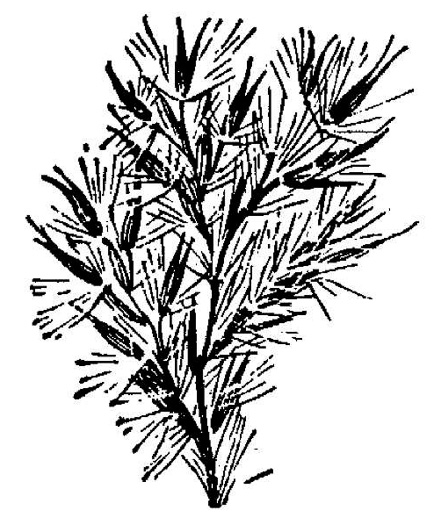Spermatophytes (seed plants): Angiosperms (flowering plants): Monocots: Commelinids: Poales
WEAKLEY'S FLORA OF THE SOUTHEASTERN US (4/24/22):
Tripidium ravennae
FAMILY
Poaceae
Go to FSUS key
Dig deeper at SERNEC, a consortium of southeastern herbaria.
Check out EDDMapS.org to see where this has been reported.
Learn more about Ravenna-grass from the Vascular Plants of North Carolina.
Ravenna grass is very widely planted as an ornamental in Ohio, especially in newer housing developments. ...it is also escaping from cultivation with greater frequency and is establishing large populations in some areas. Read more in Spread of the invasive Ravenna grass (Tripidium ravennae, Poaceae) in Ohio.
SYNONYMOUS WITH
PLANTS NATIONAL DATABASE:
Saccharum ravennae
FAMILY
Poaceae
SYNONYMOUS WITH Spread of the invasive Ravenna grass (Tripidium ravennae, Poaceae) in Ohio (Vincent & Gardner, 2016)
Tripidium ravennae
SYNONYMOUS WITH Flora of North America north of Mexico, vol. 25 (2003)
Saccharum ravennae
INCLUDING Manual of the Grasses of the US (Hitchcock & Chase, 1950)
Erianthus ravennae var. purpurascens
INCLUDING Manual of the Grasses of the US (Hitchcock & Chase, 1950)
Erianthus ravennae var. ravennae
COMMON NAME:
Ravenna-grass, Hardy Pampas Grass
To see larger pictures, click or hover over the thumbnails.
WEAKLEY'S FLORA OF THE SOUTHEASTERN US (4/24/22):
Tripidium ravennae
FAMILY
Poaceae
SYNONYMOUS WITH
PLANTS NATIONAL DATABASE:
Saccharum ravennae
FAMILY
Poaceae
SYNONYMOUS WITH
Spread of the invasive Ravenna grass (Tripidium ravennae, Poaceae) in Ohio (Vincent & Gardner, 2016)
Tripidium ravennae
SYNONYMOUS WITH
Flora of North America north of Mexico, vol. 25
Saccharum ravennae
INCLUDING
Manual of the Grasses of the US (Hitchcock & Chase, 1950)
Erianthus ravennae var. purpurascens
INCLUDING
Manual of the Grasses of the US (Hitchcock & Chase, 1950)
Erianthus ravennae var. ravennae
If a search such as "Carex leptalea var. leptalea" doesn't deliver the results you want, try "Carex leptalea".
Or, to minimize chances of a misspelling, try just "Carex le".
Less is more: If "pencil flower" doesn't deliver the results you want, try "pencil".


